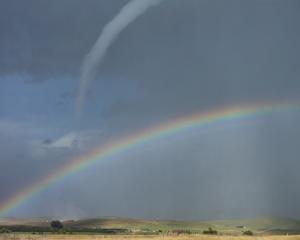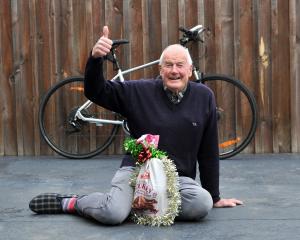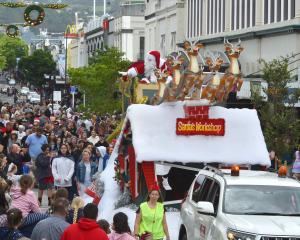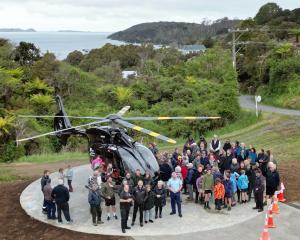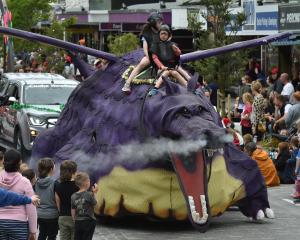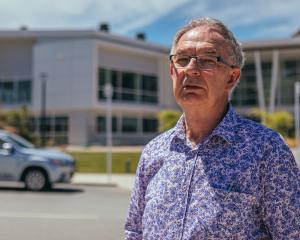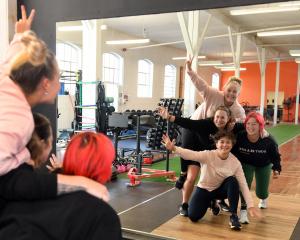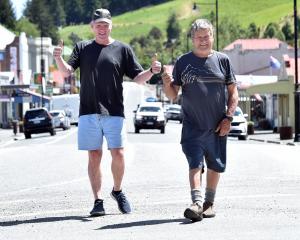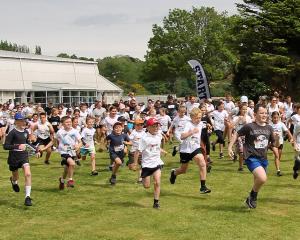Coronet Peak would not have opened this year without the power of its 217 snow-making guns which generated a 40cm snow base just in time for the start of the school holidays.
Coronet Peak Ski Area manager Ross Copland said there had been a $30 million investment in snow-making at Coronet Peak since 1991 and it had paid dividends.
The snow-making system recently belted out 51.5 million litres of water over a 10-day period, when temperatures allowed, to create 1.3 million cubic metres of snow, he said.
"A week or 10 days ago, we did not have a single snowflake. Seven days later, we can open up with up to 40cm of snow on the trails - did it all with our system.''
The need for snow-making at Coronet Peak, New Zealand's lowest-lying commercial skifield, was identified in 1988, he said.
The field was open for two weeks, closed for two weeks, open for another two weeks before closing for the season.
The case for snow-making was attractive as it would improve the reliability of the season.
Revenue would exceed costs and if the field did not open, the bottom line would sink into the red and have a large impact on staff.
"We started snow-making in 1991 and it's been part of our operation for a long time.''
The big upgrade started in 2008, a turning point, Mr Copland said.
The company invested in 141 new snow guns, which were further added to over the years.
The guns, which cost between $80,000 and $100,000 each, came from TechnoAlpin, in Italy.
The company considered itself to be the global leader by volume and the market leader in the use of technology.
"Even in a normal year, we can't open without snow-making. We are snow-making even on sunny days if it is cold enough. This season, we wouldn't have opened without snow-making. A lot of the economy relies on Coronet Peak getting open for the winter.''
Recently, Mr Copland was shocked as he drove through Queenstown before the start of the snow season. Vacancy signs were outside accommodation providers, retailers were quiet, as were rental businesses.
"This was my wake-up call. Everyone was wondering when the snow was coming.''
Mr Copland proudly revealed the 217 snow guns, and many of the field's other operations, were controlled by a smartphone app.
From their phones, staff could control the depth of the snow, start and stop the guns, turn them around, point them up or down, left or right, and change the snow quality.
Also, power consumption could be monitored along with air pressure and water use.
A GPS unit had been installed on the grooming unit, accurate to 1cm.
That allowed staff to see the depth of the snow everywhere.
Data was uploaded to the snow-making system in real time and the live feed allowed staff to move the snow guns to where the snow was needed.
Colour images gave accurate data on the depth of snow for particular areas, he said.
With the "snowsat'' on the groomer and the smartphone apps working together, the system being used at Coronet Peak was among the most advanced in the world.
There was also a huge pumping infrastructure with pump houses having 1000kW of electricity available.
The field has dams of water through which air is bubbled to stop ice forming and piercing the lining.
One dam has 93million litres of water, one has 88million litres, another has 80million and a smaller one has 40million litres.
The ponds were filled from natural water, snow melt and run-off which was all collected and recycled through the system, Mr Copland said.
The pumps could generate 300 litres per second made of one-third water and two-thirds air.
Fibreoptic technology connected the pump houses with the main server.
Mr Copland said it took significant skills from the staff to work the world-leading technology and Coronet Peak worked hard to attract and retain top staff.
"We have electricians, comms staff, IT specialists and a team of 13 snow-makers to keep the guns running, particularly when the weather comes from the east. Humid weather means a lot of ice is created on the guns and we need to de-ice them.''
Asked about his staff, Mr Copland said the whole process meant having the right people.
Coronet Peak did its best to keep its staff engaged, including in-house training.
It was important to never take the staff for granted.
Staff members went to Italy each year for training with TechnoAlpin but ended up teaching staff there about the system.
Coronet Peak staff were dealing with the system on a daily basis and could provide feedback to the manufacturers, he said.
Mr Copland had been with Coronet Peak for four years, coming from a background of civil engineering.
He worked in the property and construction industries and in the air force, he was an avionics technician.
But his love was working on Coronet Peak.
"With my technical interests, working on the mountain is exciting. We have massive systems here people are probably not aware of. We operate our own village on the mountain - real achievements through using technology. This is a great opportunity to have exposure to a lot of technology and it's fun.''


